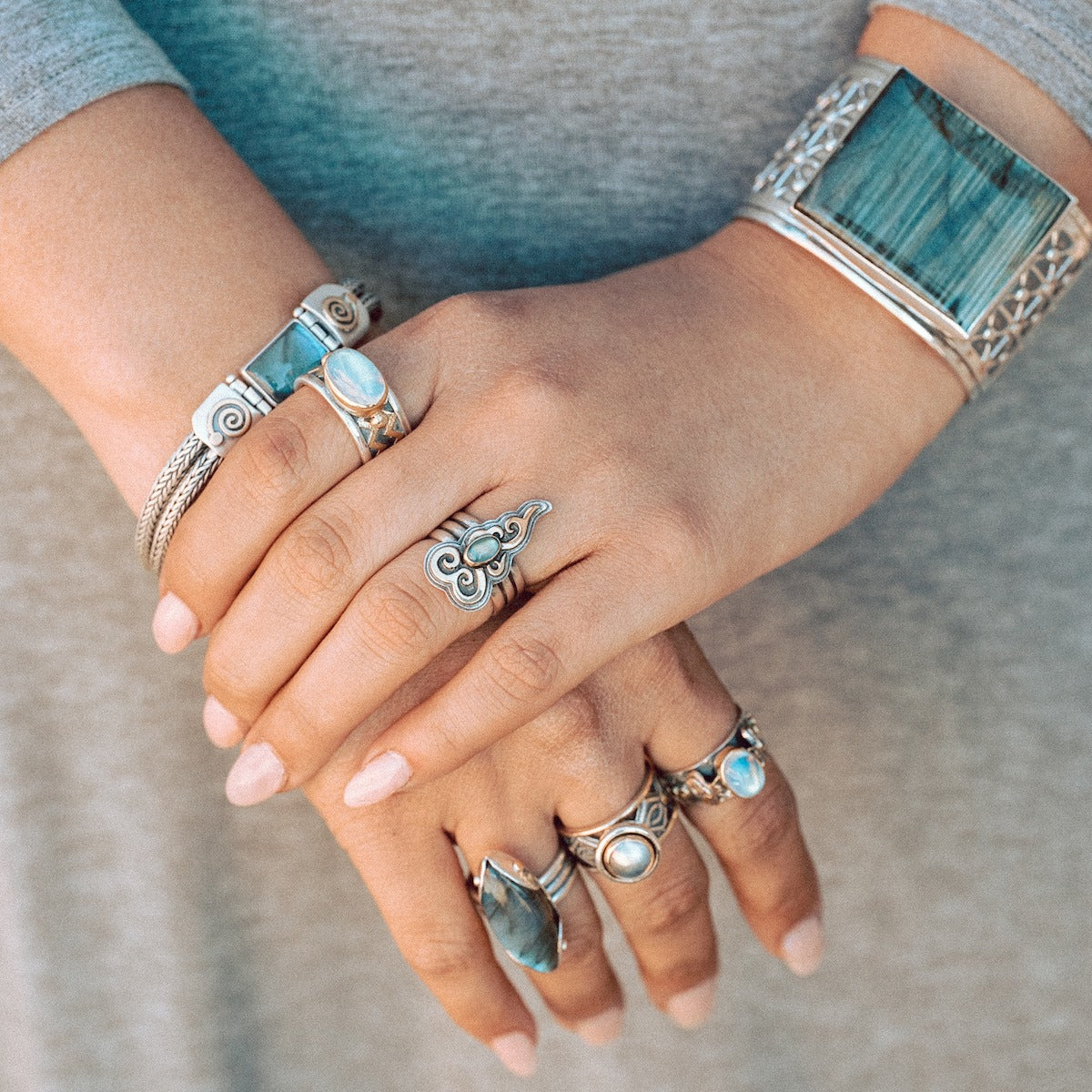The Universality of Knot Work Patterns Around The World
In the spring of 2003, I spent three weeks in the city of Chennai, formerly known as Madras, located in Southern India. Each morning, walking before the heat of the day, I was amazed to see intricate knot work patterns drawn out free hand with flour in front of the driveways and gates of homes. These artistic scrolls, I was told by am Indian friend, were offerings to local gods, and were part of a tradition that stretched back into the ancient past.
I have seen knot patterns in my travels throughout many parts of the world. In Islamic countries where iconography is prohibited, the mosques are heavily decorated with knot-like patterns. Stone can be found on ruins from the Americas to Hindu iconography in Bali, Indonesia. In Tibet, the "eternal knot" is a common symbol representing the endless cycles of existence.
The knot work most well known in the West is from Celtic iconography. Though the Celts before the Roman Empire were spread throughout much of Western Europe, we're most familiar with their designs remaining to day in England, Scotland and Ireland. On the moors, surrounded by winding stone walls and ancient Neolithic bridges, the knot work carved in stone transcends time. We know from the writings of Romans that the Celts believed strongly in the sacredness of place. Similar to the beliefs of many in South India today, the land anchored a particular god or goddess that was meant to be honored, though we do not know whether the knot work designs were made as offerings.
The broad spectrum of knot work designs found in many cultures suggests that the motif is both universal and rooted in ancient mystery. From the most general perspective, knot work iconography can be viewed as a metaphor for our own unique tapestry of experiences. On a macrocosmic level, the knots express metaphorically that life on earth is deeply interconnected, as illustrated in the Spider Women's web or the Great Hoop of Life in Native American stories. As one Native women told me, if you move a pebble on top of a mountain, you can change the course of a mighty river. This is also expressed slightly differently in the Biblical aphorism, "We reap what we sow," which is similar to the Eastern understanding of karma. Even physics today speaks of a "unified field."
Yet it is also true that individual elements of knots hold specific meaning from the perspective of sacred geometry. Look around you at different geometrical forms. Why is the earth, our eyes, the trunks of trees circular instead of square? How does the circle function in the world verses the triangle and what does that mean in terms of knot work that uses circular patterns? Here are a few hints to help you with these blue prints.
We speak of a circle of friends and live in circular cycles, such as the day and the season. Native cultures throughout the world hold ceremonies in protective circles. A knot work pattern with circles or variations of circles certainly has some important keys to relationships and community because it is a symbol for wholeness.
A square knot motif concerns structure and stability, which is why buildings use the shape of a square foundation. Numerology has always played a part in ancient cultures and there are many books on the subject. The number five, for example, represents the four directions and the center point, or the five senses.
Every shape has, within it, innate qualities that are utilized by living beings, the movement of water and air, and the very elements around us. The movements crisscross, creating a coherent pattern, or knot design, that has become a form of cultural expression throughout the world. In my work, I try to connect not only to my Celtic roots, but also to the greater human experience that unites us all.
– Helen Chantler, Designer/Co-owner of Reflective Images
Trending Now
- $272.00
- $272.00
- Unit price
- per
- $231.00
$161.00- $231.00
- Unit price
- per
- $459.00
- $459.00
- Unit price
- per
- $148.00
- $148.00
- Unit price
- per
- $148.00
- $148.00
- Unit price
- per
- $614.00
- $614.00
- Unit price
- per
- $156.00
- $156.00
- Unit price
- per
- $148.00
$103.00- $148.00
- Unit price
- per
- Choosing a selection results in a full page refresh.

